
Key Information:
- Media and communications degrees offer diverse career opportunities in writing, editing, producing, and various technical and managerial roles.
- Leading media communications programs include the University of North Carolina at Chapel Hill, University of Washington, and University of Georgia, among others.
- Programs are evaluated based on alumni outcomes, graduation rates, job placement success, student satisfaction, and affordability.
In the age of YouTube and Instagram, anybody can be a media personality, but it takes real education and experience to be a media communications professional. The field of media and communications is expanding exponentially with modern communications technology, far beyond the simpler old days of radio, television, and publishing.
Fortunately for students who want a career in the media, that means no end of career potential in any part of the field — writing, editing, producing, behind the scenes and on-camera, technical and artistic and managerial. No matter your skills or interests, there is a place in media communications.
Breaking in is the hard part, and that’s one of the main benefits of a bachelor’s in communication and media. A media and communications degree program teaches you more than technical skills and theory; it teaches you how to be a professional, helps you gain real-world experience, and provides networking connections that can make your time on the job market painless.
To help guide prospective media communications professionals to the best programs for their goals, Bachelor’s Degree Center has ranked programs that will have a real impact on student’s careers.
Methodology: Ranking the Best Media and Communications Degree Programs
To rank the best bachelor’s degrees in media communications, Bachelor’s Degree Center editors searched out accredited media and communications programs all over the US, starting with programs accredited by the Accrediting Council on Education in Journalism and Mass Communications.
From that initial list, programs were ranked according to five criteria: Alumni Salary, Graduation Rate, Job Placement, Student Reviews, and Tuition Rate. Data is drawn from College Scorecard, IPEDS, and Niche.
With these five factors, students can be confident that the programs ranked by BDC combine quality, student satisfaction, and real return on investment.
1. University of North Carolina at Chapel Hill

The School of Media & Journalism offers a degree program with multiple pathways in the University of North Carolina at Chapel Hill’s BA in Media and Journalism. The Advertising and Public Relations capstone courses include Leadership in a Time of Change, Digital Media Economics, Advertising or Public Relations Campaigning, among others.
The Journalism capstone path includes coursework like Magazine Writing, Business Journalism, Magazine Design and Photojournalism, among others. UNC-Chapel Hill’s bachelor’s in communication program offers diversity programs dedicated to inclusion within their media and communications degree, as well as an honors program.
The University of North Carolina at Chapel Hill was established in 1789. It is a member school and the flagship campus of the University of North Carolina system. The school is one of three institutions of higher learning in the country that claims to be the oldest university in the nation. The school’s definitive “college town” campus is home to nearly 30,000 students.
What We Like: UNC media and journalism students have access to admired research centers like the Charles Kuralt Learning Center, the Reese News Lab, and the NC Media and Journalism Hall of Fame.
Degree: BA in Media and Journalism
University of North Carolina at Chapel Hill
2. University of Washington

The University of Washington’s BA in Media & Communication Studies degree program, from the School of Interdisciplinary Arts & Sciences, explores in-depth communication theories and fundamentals across media genres.
Through U‑Dub’s curriculum in the media and communications degree program, students hone collaborative, creative, and critical thinking communication skills. The University of Washington’s communications bachelor’s degree program requires the completion of 68 credit units in media and communications studies.
Students graduate with finely-tuned ethical communication talents that have many applications across many industries.
The University of Washington was established in 1861 about ten years after Seattle was founded. The school operates with three campuses. The Seattle campus, located near the shores of the Portage Bay and Union Bay, is the main campus with two satellite campuses in Bothell and Tacoma. U‑Dub regularly ranks among the top universities worldwide, according to the Academic Ranking of World Universities.
What We Like: The University of Washington played a major part in building the Pacific Northwest into a tech industry powerhouse, giving media communications graduates a robust job market.
Degree: BA in Media and Communication Studies
3. University of Georgia
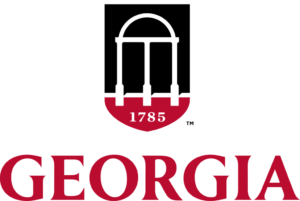
The AB in Communication Studies at the University of Georgia’s Franklin College of Arts & Sciences prepares to apply their theoretical communication knowledge to business, corporate education, public relations, and professional training, among others.
UGA’s bachelor’s in communication degree program requires the completion of 120 credit hours, and students are required to complete a course in Rhetorical Criticism and Empirical Research Methods.
The University of Georgia was established in 1785 as a land grant institution of higher learning through the Morrill Act. The school holds the distinction of being designated a sun grant, sea-grant, space-grant, and land grant school — one of only a few universities in the nation. UGA is among the oldest universities in the United States. A portion of the main campus is included in the National Register of Historic Places.
What We Like: UGA’s Communication Studies Department has some of the most respected faculty members in the field, including the National Communication Association award winners.
Degree: AB in Communication Studies
4. University of Iowa

The University of Iowa’s BA in Communication Studies degree program prepares graduates for the increasingly complex world of 21st-century communication methods. UI’s communications bachelor’s degree program offers students an option to earn needed credit units through an internship.
The school allows for the transfer of credit and offers an online method to determine which courses will be accepted by the University of Iowa before applying. UI’s Communication Studies department offers annual scholarships and awards.
Fifty-nine days after Iowa joined the US in 1847, the University of Iowa was established alongside the Iowa River. The school holds the distinction as the oldest institution of higher learning in the state of Iowa. UI’s urban-type campus covers 1,800+-acres and is home to 33,000 students. The school is organized among 11 colleges offering 200+ degree programs.
What We Like: UU offers media communications students a wide variety of scholarships and awards — even travel awards for presenting at conferences.
Degree: BA in Communication Studies
5. Pennsylvania State University

Pennsylvania State University’s BA in Media Studies is intended for students interested in following a more academic approach to media studies.
The Bellisario College of Communications’ media and communications degree program explores the various methods to understand how communication occurs — socially, culturally, and behaviorally, among others. Penn State’s bachelor’s in communication degree program offers four emphases — Media Effects, Society & Culture, Film and TV, and International Communications.
The Accrediting Council on Education in Journalism and Mass Communications (ACEJMC) accredits Bellisario College of Communication’s BA in Media Studies program.
Pennsylvania State University was established in 1855. Penn State is a 4‑grant university holding a sun grant, sea-grant, space-grant, and land grant university. The National Register of Historic Places recognizes two buildings on Penn State’s 7,000+-acre campus. Pennsylvania State University at University Park is the largest of the 24 member schools within the Pennsylvania State University system.
What We Like: Penn State’s resources mean students in the media and communications degree program have access to some of the most state-of-the-art labs in the world.
Degree: BA in Media Studies
Pennsylvania State University
6. Brigham Young University
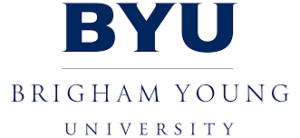
Brigham Young University’s BA in Communication Studies comes from the ACEJMC accredited School of Communication. BYU’s communications bachelor degree program takes a more generalized approach that the other media and communications degree programs offered by Brigham Young University.
Degree candidates study communication theories, research, critical thinking, and presentation across the diverse fields of pop culture, international issues, and digital media. The School of Communication’s students are required to have a laptop computer for in-class use that meets specific hardware and software requirements set forth by BYU.
Brigham Young University is a private university established in 1875. The school is affiliated with the Church of Jesus Christ of Latter-day Saints. Nearly all BYU are members of the Latter-day Saints church. The school is organized with eleven schools/colleges offering hundreds of degree program options from which to select. US News ranks Brigham Young sixty-first among national institutions of higher learning.
What We Like: BYU’s Diversity in Media Lecture Series collaborates with Historically Black Colleges to hold conversations about representation in media.
Degree: BA Communications Studies
7. University of South Carolina

The College of Information & Communication offers the University of South Carolina’s BA in Mass Communications prepares graduates for careers in business, media, advertising or public relations, among others.
Carolina’s bachelor’s in communication program requires a final capstone project to graduate and offers students a wide variety of internships from which to select.
Degree candidates have a wide variety of courses to choose from the fields of newspapers, media print, and television production. Carolina’s media and communications degree program requires students to complete 120 credit units.
The University of South Carolina was established in 1801. Carolina is a member school of the University of South Carolina System and its flagship campus. About 34,000 students study on the school’s urban campus, just steps away from the SC State House. The University of South Carolina holds the distinction of being the largest institution of higher learning in the Carolinas.
What We Like: Students in the USC School of Journalism and Mass Communications are exposed to current, game-changing research in advertising, public relations, technology, and health communication.
Degree: BA in Mass Communications
University of South Carolina
8. Louisiana State University

Louisiana State University’s BA in Mass Communications comes from the respected Manship School of Mass Communication. Students studying LSU’s bachelor’s in communication degree can opt for five areas of specialty — Journalism, Pre-Law Program (a 3 + 3‑year dual program), Public Relations, Political Communication, and Digital Advertising.
The numerous mass communication education pathways offer exciting internship opportunities. Students who have followed the Political Communication major have interned with governors, state senators, and state representatives.
Louisiana State University, established in 1860, is a member school and the flagship campus of the Louisiana State University System and on behalf of the state itself. The school’s nearly 5,000-acre urban campus is home to more than 30,000 students, with downtown Baton Rouge just to the north.
Louisiana State University is a sea-grant; land grant and space grant institution of higher learning. The Manship School of Mass Communication was established in 1912 and is one of the oldest schools of its kind in the US.
What We Like: LSU’s Manship School offers students the unique Social Media Analysis & Creation (SMAC) Lab for research in the most powerful new media of the century.
Degree: BA in Mass Communications
9. Kansas State University

Kansas State University’s Miller School of Journalism and Mass Communication offers two opportunities for a Mass Communications bachelor degree: either a Bachelor of Arts program or a Bachelor of Science program.
KSU’s BS in Communications program requires the completion of 39 credit units within the mass communication major. Kansas State University allows students to transfer up to twelve credit units with the mass communications bachelor degree program. The coursework offered through KSU’s BS in Communications program covers a range of writing and production classes.
Kansas State University was established in 1863 as the result of the Morrill Land Act. IN addition to being the state of Kansas’ first university, KSU is a space-grant and land grant school. KSU is the flagship school for the Kansas State University system. The school’s nearly 670-acre campus is home to more than 22,000 students, and structures listed on the National Register of Historic Places.
What We Like: Kansas State’s Miller School has radically renovated its curriculum with an emphasis on cross-media communication, including the JMC Gateway emphasizing experiential learning for production skills.
Degree: BA or BS Mass Communications
10. Colorado State University

Colorado State University’s BA in Communication Studies takes a tri-fold approach that includes Organizational/Relationship, Civic Engagement, and the Visual/Media Culture.
Additional coursework includes core requirements of the humanities, social sciences and history. Students graduate prepared for careers in politics, government, business, education, public relations, and digital communications, among others.
Colorado State University was established in 1870 as a land grant school under the Morrill Land Act — even before Colorado became a state. CSU is the flagship school within the Colorado State University system. The school’s urban campus in Fort Collins is home to nearly 33,000 students studying for their degrees from 8 colleges.
The school is consistently recognized as a top-rated school among public universities. Fort Collins, CO averages more than 300 sunny days each year and is only an hour from downtown Denver — one of the fastest-growing cities in the country.
What We Like: True to Colorado style, CSU’s media communications program emphasizes community engagement with initiatives like the Center for Public Relations and the ACT Human Rights Film Festival.
Degree: BA in Communication Studies
11. University of Alabama

The College of Communication & Information Sciences at the University of Alabama offers two media and communications degree program options — a Bachelor of Arts in Creative Media and a Bachelor of Arts in Communication Studies.
The Journalism & Creative Media path involves students in the art of storytelling across many mass media outlets. A Communications Studies’ student fine-tunes their written and oral skills; which can be easily applied to the student’s personal and professional objectives.
The University of Alabama was established in 1820 and currently holds the distinction of being the flagship school for the University of Alabama system.
Additionally, UA is a space-grant and sea-grant institution of higher learning. The school’s architecture resembles the antebellum period-style so recognizable in the south. UA’s nearly 2,000-acre campus is home to nearly 39,000 studying from thirteen academic schools.
What We Like: The University of Alabama’s diversity initiatives have been recognized by the International Mass Communication Training and Research Center as a model for communications education.
Degree: BA in Communication Studies or BA in Creative Media
12. Elon University

The School of Communications at Elon University offers either a BA in Communication Design or a BA in Media Analytics. Elon University’s bachelor’s in communication programs have been created using innovative curriculums that delve into a student’s ability to make strategic decisions and write professionally in a number of industries.
Elon’s media and communications degree programs required the completion of 132 credit units to graduate. Prior to graduation, communication students complete a professional internship, which earns credit towards the completion of the degree.
Elon University is a private university that was established in 1889. Although once affiliated religiously, Elon University operates as a nonsectarian institution of higher learning. Elon University’s School of Law’s campus is operated as a satellite campus in Greensboro, NC.
The school’s 600+-acre campus is home to nearly 6,800 students studying from six schools/colleges. US News recognizes Elon University first among regional universities located in the south.
What We Like: Elon is totally committed to student career success, including dedicated career services and internship staff just for the School of Communications.
Degree: BA in Communication Design, BA in Media Analytics
13. University of San Francisco

The University of San Francisco’s BA in Media Studies is a bachelor’s in communication program that provides students with an all-encompassing liberal arts core program that delves into the relationship between society, media, and culture.
Upper-level coursework in the Media Studies program includes Gender and the Media, Politics and the Media, Media, Memory, and History, and Communication and Popular Music, among others. Students are required to complete a relevant thesis to graduate.
The University of San Francisco was established in 1855. The school was founded by the Jesuits and first known as St. Ignatius Academy. USF operates from its Hilltop main campus, along with seven other campuses. USF was among the top 100 national universities, according to US News. Seventy-two percent of undergraduate students receive some form of financial aid.
What We Like: The best thing going for USF media studies graduates is San Francisco itself, with limitless opportunities for internships, jobs, and networking in media, tech, and government.
Degree: BA in Media Studies
University of San Francisco
14. University of Tennessee, Knoxville
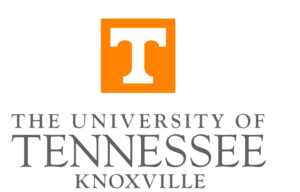
Students can earn a BA or a BS in Communication from the University of Tennessee, Knoxville School of Journalism & Electronic Media (JEM) — the exact degree depends upon the student’s goals. UTK’s bachelor’s in communications offer a specialty area of Media Management, which explores the concepts of media programming, promotions, and management.
Many students vying for media and communications degrees also supplement their degrees with business and management courses. Students graduate prepared for careers in publishing journalism and public relations, among others.
The University of Tennessee, Knoxville was established in 1794 and the flagship school of the University of Tennessee system. UTK was founded 2 years before Tennessee received its statehood. The University of Tennessee’s 600-acre campus is home to nearly 29,000 students.
US News recognizes UTK among the top 55 public universities in the country. The school holds the distinction of the only institution of higher learning to possess 3 presidential editing projects.
What We Like: Students in UTK’s communications program have access to five state-of-the-art labs, including the Adam Brown Social Media Command Center, the CICS User Experience Lab, and the Scripps Convergence Lab.
Degree: BA or BS in Communication
University of Tennessee Knoxville
15. Texas State University

Texas State University’s Media Communications Bachelor degree includes several options. These are Bachelor of Science (BS) degrees in Digital Media Innovation, Electronic Media, Journalism, Advertising, Public Relations and a BA in Mass Communication. Each media communication baccalaureate degree requires the completion of 120 credit hours.
Degree candidates are encouraged to take internships (coordinated through the school) but are not required to do so to earn their bachelor’s in mass communications degree from the School of Journalism and Mass Communication. Students also have the option of pursuing a concentration in: Digital Media, Multimedia Production and/or Sports Media.
Texas State University was founded in 1899 as a normal school. From its humble beginnings, Texas State now holds the distinction of being the largest school within the Texas State University system. In fact, Texas State has grown to be the fifth-largest institution of higher learning in the state of Texas. Lyndon B. Johnson, the 36th president graduated from Texas State University.
What We Like: Texas State’s School of Journalism and Mass Communication offers more than a dozen endowed scholarships, with awards of more than $3000.
Degree: BS in Digital Media Innovation, BS in Electronic Media, BA in Mass Communications, BS in Journalism, BS in Advertising, BS in Public Relations
16. University of Idaho

The University of Idaho’s Broadcasting & Digital Media degree is available as either a BA or a BS program. These bachelor’s in communication programs provide students with hands-on experience as they prepare for rewarding careers in the many areas of digital media.
Degree candidates facilitate the management of an FM station and a public television station on-campus. The BS in Communications path requires the completion of 124 credits, whereas the BA in Communications requires the completion of 128 credit units to graduate.
The University of Idaho was established in 1889 as the result of the Morrill Land Act, and a year before Idaho became a state. UI was Idaho’s only institution of higher learning until the school’s College of Law received accreditation by the American Bar Association. UI’s 1,500+-acre rural campus is home to nearly 12,000 students studied from among more than 140-degree program options.
What We Like: For students interested in broadcasting, the University of Idaho has its own high-def television studio, and is home to Idaho Public Television.
Degree: BA or BS in Broadcasting & Digital Media
17. University of North Florida
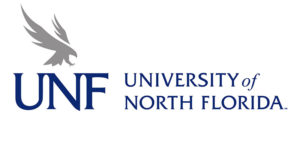
The School of Communications at the University of North Florida offers a BS in Communications or a BA in Communications Studies degree program. The BS in Media and Communications degree prepares degree candidates for production and journalism jobs in mass media fields.
The BA in Communications degree program allows students to apply the concepts of mass media within businesses and organizations through the application of interpersonal skills. Students vying for a BS degree must declare a major from the choices of Public Relations, Multimedia Journalism & Production or Advertising.
The University of North Florida was established as a public university in 1972. UNF is a member school of the State University System of Florida. The school’s 1,200-acre campus is located about halfway between downtown Jacksonville and the city’s Atlantic Ocean beaches. UNF operates with five colleges/schools offering degrees in nutrition, business, nursing, music and the biology of coastal regions.
What We Like: UNF’s connections through the northern region of Florida allows the School of Communications to place students in internships in everything from TV and newspapers to public relations firms.
Degree: BS in Communication or BA in Communication Studies
University of North Florida
18. Iona College
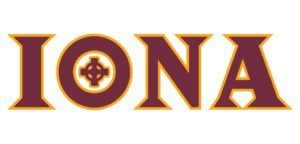
Iona College’s BA in Mass Communication degree program is for students interested in exploring how to use the mass media to cleverly present engaging, truthful stories. Iona’s degree candidates have the opportunity to select from concentrations that include journalism, broadcast media, public relations, and advertising.
Students are required to complete an internship to graduate. Past students have interned at Disney, NBC, and SI. In addition to the school’s core curriculum, students must complete 39 credit hours for each.
Iona College was established in 1940 in New Rochelle, NY; which is immediately north of the New York City borough of the Bronx and only a couple of miles from the western end of the Long Island Sound. The school is affiliated with the Congregation of Christian Brokers.
Iona College’s nearly 50-acre suburban campus is home to more than 3,750 students. Iona operates within two schools – the Business School and the School of Arts & Science.
What We Like: Iona College’s location in Westchester County makes it possible to place students in internships with some of the most important media companies in New York City.
Degree: BA Mass Communication
19. Winthrop University

Winthrop University’s BA in Mass Communications degree is for students who wish to enter the mass media fields of production, journalism, advertising, business journalism, or newspapers, among others.
Winthrop’s coursework requires the completion of 120 semester hours to graduate. Winthrop’s bachelor’s in communication program includes a foreign language proficiency requirement equal to a minimum a 2nd — semester college-level student. Students graduate prepared to edit and/or produce a printed or broadcast presentation.
Winthrop University was established in 1886 as a public institution of higher learning specifically designed to educate women as teachers. The school’s Rock Hill suburban campus is home to more than 6,000 students. This main campus is about 20 minutes from Charlotte, NC, and Columbia, SC. The school is located in a historic district listed on the NRHP. The average class size at Winthrop University is 21.
What We Like: Winthrop’s Department of Mass Communications partners with the Department of Computer Science for a specialized concentration in Digital Mass Media.
Degree: BA in Mass Communication
20. Southern Illinois University, Edwardsville

Southern Illinois University, Edwardsville’s Mass Communications bachelor degree programs are offered as either BA or BS degrees.
SIUE’s mass communications program has been recognized by the trusted Accrediting Council on Education in Journalism and Mass Communication. Students learn their trade using cutting-edge equipment and small class sizes. Degree candidates select a specialty from Journalism, Advertising & Strategic Media, or Journalism.
Southern Illinois University was established in 1957. Its 2,600+-acre campus is about 20 miles (ca. 32 km) from downtown St. Louis. It is one of two member schools that comprise the Southern Illinois University system. Tuition rates remain the same for in-state residents and out-of-state residents.
The university offers degrees from its 8 schools/colleges. The school’s campus ranks eleventh among the Safest Colleges Campuses in the country, according to the National Council for Home Safety and Security.
What We Like: St. Louis is one of the largest media markets in the US, and SIU’s connections throughout the city mean the best internships, networking, and job opportunities in the region.
Degree: BA or BS in Mass Communications
Southern Illinois University
21. University of Louisiana at Lafayette

The University of Louisiana at Lafayette’s BA in Mass Communication degree program prepares students to deliver ideas — accurately, and effectively.
Great communicators are versatile professionals with new ways to communicate, changing all the time. UL’s media and communications degree explores communication theories and their fundamental principles.
Students find rewarding careers in the fields of online publications, newspapers, or magazines. UL’s newspaper, The Vermilion, is student-produced and managed, and a great place to network.
The University of Louisiana at Lafayette was established as an industrial institution of higher learning in 1898. The school still acknowledges Acadian French Heritage. UL’s 1,300-acre urban campus is located in Louisiana’s 4th largest city, Lafayette — in the Cajun portion of the state. UL’s campus is home to 20,000 students earning their degrees among the historic trademark ‘century oaks’ across the campus.
What We Like: ULL offers mass communication students the opportunity for a number of endowed and non-endowed scholarships.
Degree: BA in Mass Communication
University of Louisiana at Lafayette
22. University of North Alabama

The University of North Alabama offers a BA or BS in Mass Communication or Communication Arts. The bachelor’s in Communication Arts degree option allows students to choose a Communication Studies emphasis or a Cinematic Arts emphasis.
The Mass Communication Bachelor degree has two emphases from which to choose– Public Relations and Journalism & Digital Media Production. Each degree/pathway includes an independent study or internship. The University of North Alabama’s media and communications degree has received accreditation from the Accrediting Council on Education in Journalism and Mass Communications (ACEJMC).
The University of North Alabama was established in 1830 and holds the distinction of being the oldest institution of higher learning in the state of Alabama. In the early 1870s, the University of North Alabama was one of the first colleges in the country to offer coeducation education. The school’s urban campus is home to nearly 7,700 students studying for at least 80-degree programs through their schools/colleges.
What We Like: UNA has one of the highest proportions of international students of any regional university, bringing diversity and global perspective to programs like media communications.
Degree: BA or BS in Communication Arts or Mass Communication
University of North Alabama
23. University of South Florida

The renowned Zimmerman School of Advertising & Mass Communications offers the University of South Florida BA in Mass Communications degree program with communication specializations/sequences.
These include Public Relations, Telecommunications News, Advertising, Multimedia Journalism, Telecommunications Production, or News — Editorial. All media and communications degree candidates must complete two courses: Mass Communications & Society and Writing for the Mass Media. The Zimmerman School awards numerous scholarships on a yearly basis.
The University of South Florida was founded in 1956 and is located in the Tampa Bay region of Florida. The school serves over 50,000 students and is incredibly diverse with over 40% identifying as non-white. The university operates with 14 colleges — offering over 180 majors. Nationally regarded, eight of these USF programs rank in the top 50 according to U.S. News and World Report.
What We Like: USF’s location in the Tampa Bay metropolitan area — the 14th largest media market in the US — means students have ample choices for internships, and active recruitment from TV, radio, journalism, and other media outlets.
Degree: BA in Mass Communications
University of South Florida
24. Shippensburg University

Shippensburg University’s BA in Communication/Journalism offers concentrations in Print Media, Public Relations, or Electronic Media.
In addition to Ship’s core curriculum, a bachelor’s in communication degree requires the completion of 42 credit units in upper-level courses related to journalism and communication. Mass Communication degree candidates must also complete Applied Statistics to meet the math requirement.
Shippensburg University’s communications bachelor’s degree program has received accreditation from the Accrediting Council on Education in Journalism and Mass Communications (ACEJMC) — one of only three in the state.
Shippensburg University was established in 1871. The school’s 200-acre rural campus is home to nearly 7,000 students and about 40 miles from the Commonwealth of Pennsylvania’s capital of Harrisburg. Shippensburg University’s average class size is 26 students. The school is home to the only elementary school lab in the state.
What We Like: Ship’s student-run SUTV has been awarded an Emmy in the National Student Production Awards.
Degree: BA in Communication/Journalism
25. Southeast Missouri State University

Southeast Missouri State University’s BS in Mass Communication degree program offers several professional emphases. These include Multimedia Journalism, Television & Film, Public Relations, and Advertising.
Students graduate prepared for the quick-paced, ever-changing world of mass communications. SEMO’s BS in Communications program requires degree candidates to complete 36 hours of coursework in mass communications. Past students have received internships with Turner Broadcasting, MEC, and ESPN. SEMO’s Department of Mass Media awards scholarships yearly to eligible students. All students are encouraged to apply to determine eligibility.
Southeast Missouri State University was established in 1873 as a public institution of higher learning. The school’s main 325+-acre campus is located near the Mississippi River’s banks and is home to more than 11,500 students. The original school was established by lobbying the state by several wealthy, well-known politicians and local businessmen. SEMO is, according to its enrollment, the sixth-largest public university in the Show-Me state.
What We Like: The Rust Center for Media is the home of SMSU’s media programs, a state-of-the-art center with labs, studios, and student-led advertising and public relations firms.
Degree: BS in Mass Communication
Southeast Missouri State University
What is Media and Communications?
As the field of communications and media studies becomes more diverse, more people are drawn to exploring career paths in the field. Pursuing a degree in either media or communications can prepare the individual for many work opportunities.
Looking at these communications and media studies degree programs, it is important to understand the subtle differences between the ways that colleges and universities set a communications and media studies definition.
Studying media and communications helps students learn and understand the latest in media trends and technology. It also helps them to develop critical thinking skills to be able to assess information and how media impacts the world.
The communication and media studies definition is a course of study that allows students to explore a wide range of media-related subjects, such as the historical and moral impact that the media can have on society. Students also develop skills such as copywriting and film/TV production.
There are many areas of media studies, including:
- graphic design
- social media marketing
- digital marketing
- interactive media
You may also add specializations like project management or cultural studies to increase your marketability. Media professionals know there are many sides to the media industry, the Bureau of Labor Statistics shows tremendous growth in the field. Full-time or part-time undergraduate programs prepare students for this exciting field.
For a proper communication and media studies definition, think of communication studies as a broader field that explores all forms of communications and the impact they have. With communication and media studies, students are prepared for careers in journalism, marketing, and business management.
Understanding how the media can impact society politically and the role it plays in swaying public opinion provides students with the foundation for their career.
What Can You Do With a Mass Communications Degree?
A degree in media and communications may seem appealing but they wonder what are the types of careers in media and communications. In other words, what can you do with a mass communications degree?
Most directly link a mass communications degree with jobs in journalism such as televisions, radio or film, but there are other careers in media studies that students should consider. The skills, such as copywriting and communication strategies, learned in these types of programs have led people into government, business management, marketing, and public relations. So, the options for careers in media and entertainment are many.
When wondering what can you do with a mass communications degree, there are a broad range of options. Students have even used their communications skills in the theater, teaching roles, and education.
Students may even enter the field interested in journalism but graduate with another professional focus in mind, based on their studies. Students interested in politics may become speechwriters, while former athletes may become commentators.
What Makes a Good Media Communications Program?
When looking for the best universities for media studies, there are a number of hallmarks to look for. The student-to-professor ratio is a big one. Students who receive individual attention in small classes in the best universities for media studies are able to ask questions and fully understand the subject matter.
Also, smaller classes allow for more hands-on opportunities for those pursuing a media and communications major. Hands-on learning reinforces information gained through studies and classroom lectures.
Another thing to look at is the teaching staff’s credentials. The best colleges for media communications majors will have exceptional, experienced professors teaching about materials they have experienced firsthand in the field. A well-developed media and communications major program will also offer areas of concentration for a communications major so that students have the ability to tailor their studies with some topics that interest them such as health studies or public advocacy. This gives them a broad, solid education.
Also, look at the program’s attrition rate. The best colleges for media communications majors will have a higher graduation rate. If students are failing to complete the program and graduate, this may indicate that each student is not getting the attention they deserve. Look at each program in-depth and, if possible, talk with a current professor or student to get a real feel of the program’s value.
Related Rankings:
15 Best Online Media Communications Degree Bachelor’s Programs
10 Fastest Online Media Communications Degree Bachelor’s Programs
10 Most Affordable Online Media Communications Degree Bachelor Programs
